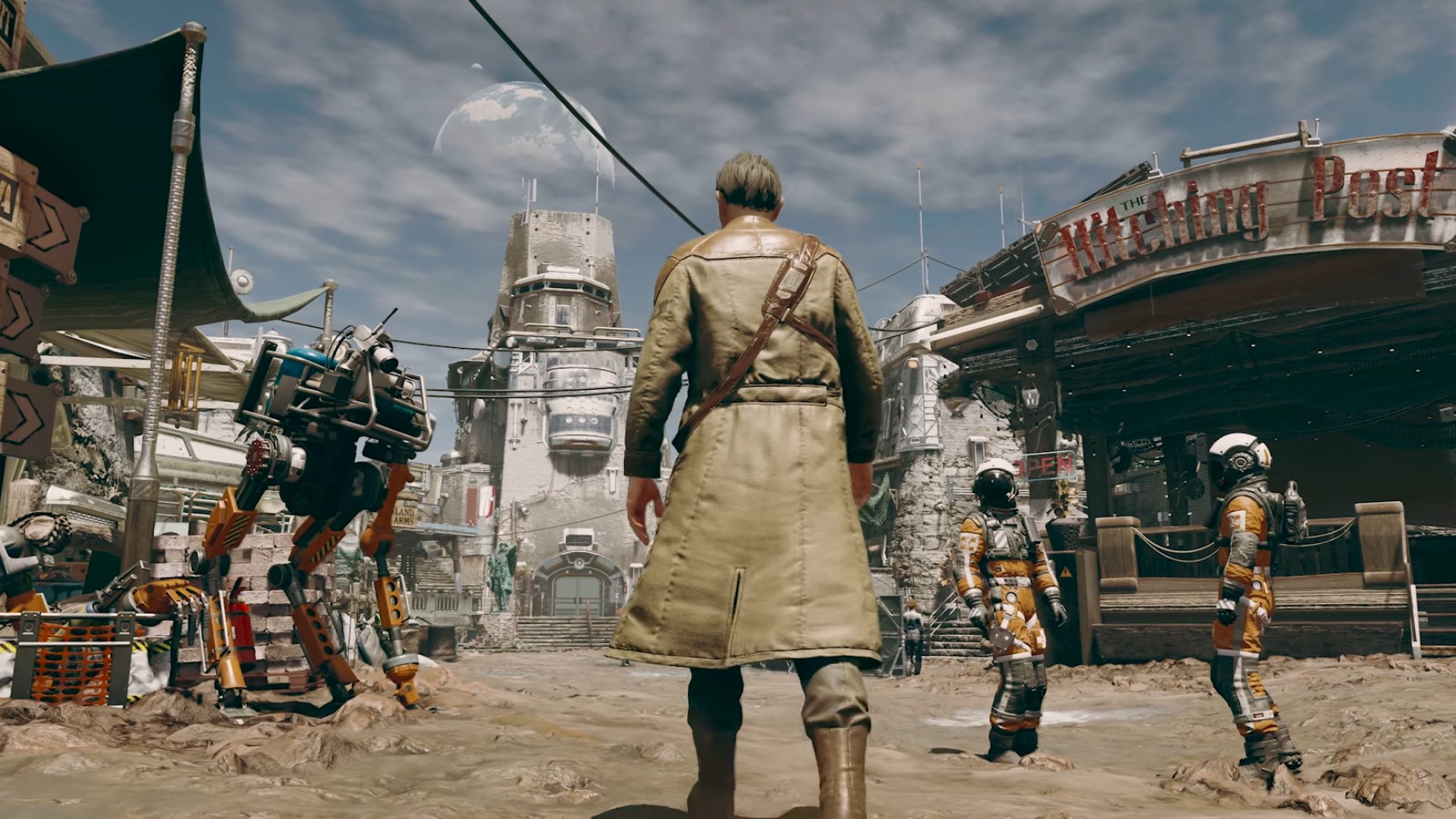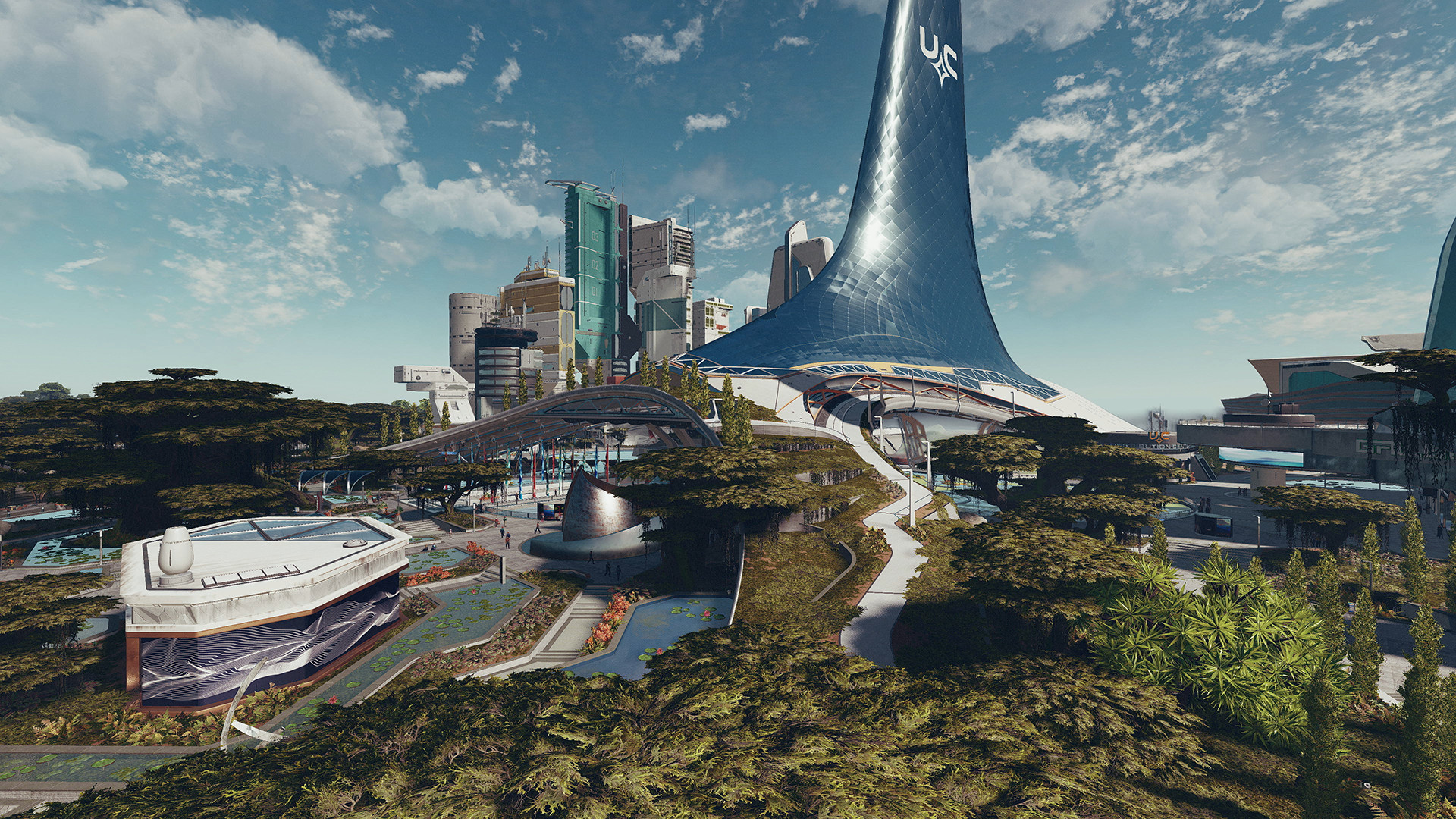The Outer Worlds showed me what Starfield is missing
Empty space

Despite being set over 300 years in our future, the people of Starfield have little to offer in the way of new ideas. Bethesda’s sci-fi RPG gives us a sprawling galaxy full of planets to explore and starships to build, but the people who populate this universe seem oddly closed-minded.
Even though they exist on far-flung stars and are clad in futuristic clothing, the denizens of Starfield’s Settled Systems seem trapped in simplified reflections of the issues of our own time. Alone, this would not necessarily be an issue. Sci-fi of Starfield’s sort has a long tradition of holding up a mirror to reality. However, the issue with Starfield’s factions is that, unlike the institutions of our own world, they remain stagnant. Even the player is unable to affect meaningful change in their capacity as the protagonist. Neither the squeaky-clean United Colonies nor the rough-and-ready Freestar Collective evolve over the course of the game. Thanks to this inertia, the people of these factions feel less like well-rounded humans and more like goody-two-shoes cardboard cutouts.
Minor Starfield spoilers ahead.
For example, the Freestar Collective’s faction quest has you sign up with the Rangers - a group of interplanetary law enforcers taken right out of classic space-Western Firefly. In true detective-story fashion, you eventually uncover a conspiracy that goes all the way to the top - implicating one of the Collective’s leaders: business magnate Ron Hope.
Though you can kill Hope and end the corruption, the quest does little to change the nature of the Collective. It’s still an unregulated, near-libertarian coalition where the factors that produced Hope very much remain in place. The Freestar Collective remains just as it was - unchanged by the player’s actions in all but the most superfluous ways. The only difference is that the marshall of the Rangers has given you a shiny badge.
Worlds beyond

However, other entries in the open-world sci-fi RPG genre show us that it doesn’t have to be this way. Released in 2019, The Outer Worlds is a sci-fi RPG developed by Obsidian Entertainment. Though its scope is narrower than Starfield’s, Obsidian’s title does a lot more with a lot less, regularly poking holes in the tapestry of its own setting in order to produce more tantalizing storylines and interactions for the player.
The Halcyon star system where The Outer Worlds takes place may be far smaller than Starfield’s Settled Systems, but it is anything but stagnant. Halcyon is dynamic and colorful, and full of dangerous people with dangerous ideas.
Sign up for breaking news, reviews, opinion, top tech deals, and more.
Halcyon presents us with a very distinctive flavor of futuristic dystopia. Contrary to Starfield’s relatively tame factions, the hyper-capitalist hellscape of Halcyon is stretched beyond the excesses of our modern-day. The Outer Worlds’ grim setting is full of originality and flair. NPCs repeat corporate slogans like religious mantras, downtrodden workers rent grave plots from their corporate masters so that their loved ones might receive the dignity of a burial, and even suicide is considered “destruction of company property.”
The Outer Worlds presents us with a very distinctive flavor of futuristic dystopia
Starfield, by contrast, presents a setting that’s barely distinguishable from our own reality when it comes to society and social norms. The contrast between the centralized power of the United Colonies and the diffuse individualism of the Freestar Collective seems taken right out of a modern-day US politics textbook. Starfield may look futuristic, but its people are having the same arguments about distributions of power that US voters have been having since the country was founded.

The same can be said for the mutability of both games’ environments. In The Outer Worlds’ opening chapter, you are given the chance to divert power from a corporate cannery town to a local agrarian collective. Do so, and the town of Edgewater will go from a hub of industry to a settlement on the brink. Lights will dim, stores will close their shutters, and a mob of workers will form outside the cannery. These are small touches, but they amount to giving the setting a sense of reactivity.
Conversely, after a frantic chase through the New Atlantis spaceport in Starfield, I returned to find that the landing zone soon returned to normal after large-scale destruction. The United Colonies seemed to hardly care that a mysterious assailant had run rampant through the city’s streets and instead opted to never speak of the threat again. All the gravity drives in the Settled Systems couldn’t overcome this inertia.
The company we keep

In the best RPGs, companion characters act as our windows into the wider world, giving some much-needed human context to their respective settings. Unfortunately, in Starfield, your companions very much reflect the game’s sense of stagnation. The game’s four central companions change very little over the course of the adventure.
For example, Sarah Morgan remains an endearing but reserved United Colonies shill, while Barrett never deviates from his dad-joke-infused wisecracking. While both have companion quests that allow you to learn more about them, neither evolves in a way that alters the characters or their relationships with the wider world. Both Barrett and Sarah’s personal quests help bring them closure for past trauma, but, outside of dialogue for the missions themselves, these side quests do little to bring about tangible development beyond a set of simplistic, paint-by-numbers romance subplots.

Conversely, Parvati and Vicar Max in The Outer Worlds plumb deeper depths with their stories. Max’s questline has him attempt to solve the question at the very heart of his religion - attempting to find the solution to the ineffable plan that he believes underpins all of reality. The quest has him challenge his beliefs, potentially allowing him to find peace during the game’s epilogue.
Parvati’s personal quest goes above and beyond
Parvati’s personal quest goes above and beyond, however, as you help the well-meaning mechanic come out of her shell and embrace her own asexuality. It’s a lovely piece of LGBTQ representation which also leads Parvati to take up a life aboard the Groundbreaker - an independent starship far removed from her original home in the corporate town of Edgewater. By coming to terms with herself, Parvati is empowered to leave behind a life of tedious corporate toil and embrace a line of work that really matters to her.
Starfield may offer a far wider range of features than The Outer Worlds, but it’s Obsidian’s creation, not Bethesda’s, that imagines the more complete setting. This is because The Outer Worlds is far more comfortable with the player prodding and poking at the game’s factions, institutions, and characters. Starfield, conversely, seems to jealously guard its setting, giving its worlds and characters a sterile, immutable feel that makes their universe feel stagnant.
Looking for more immersive gaming experiences? Check out our lists of the best story games and the best single-player games.

An editor and freelance journalist, Cat Bussell has been writing about video games for more than four years and, frankly, she’s developed a taste for it. As seen on TechRadar, Technopedia, The Gamer, Wargamer, and SUPERJUMP, Cat’s reviews, features, and guides are lovingly curated for your reading pleasure.
A Cambridge graduate, recovering bartender, and Cloud Strife enjoyer, Cat’s foremost mission is to bring you the best coverage she can, whether that’s through helpful guides, even-handed reviews, or thought-provoking features. She’s interviewed indie darlings, triple-A greats, and legendary voice actors, all to help you get closer to the action. When she’s not writing, Cat can be found sticking her neck into a fresh RPG or running yet another Dungeons & Dragons game.